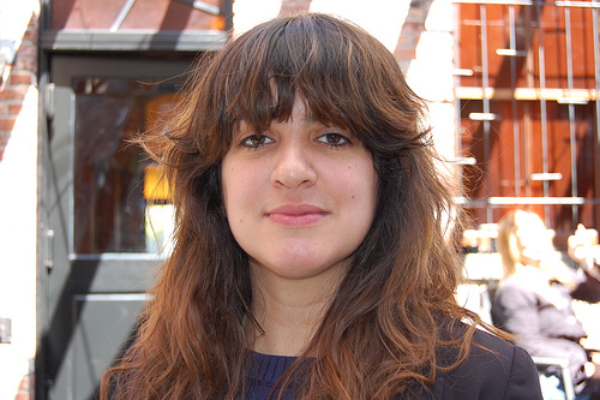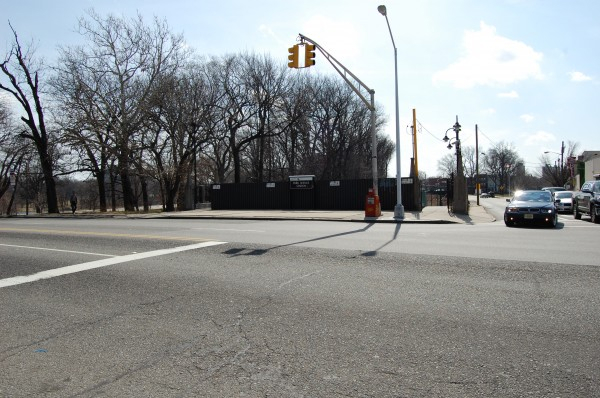Three years ago, Sharon Rodriguez was walking to her job as a bartender in downtown Newark. When the light turned green, she said she stepped into the intersection and was struck by a vehicle.
"And then a car came towards, me, turning. It just hit me from the front. And I slid across the hood," she said.
Rodriguez, 29, said her head hit the hood with such force, the fillings popped out of her teeth. She wound up under the car, at which point, she said, the driver backed up and drove away.
She was taken to the emergency room at The University Hospital in Newark where she needed stitches in her chin, and her jaw had to be reconstructed.
(Photo: Sharon Rodriguez. Kate Hinds/WNYC)
In Newark, roughly 500 pedestrians are struck by cars each year. It’s one of just two dozen cities across the country singled out by the federal government as a pedestrian safety focus city.
Another thing about Newark: its average household income is about half the state’s median.
Experts say that's not an anomaly: there's a statistical correlation between high-poverty neighborhoods and the likelihood of being hit by a car.
"The higher the income level, the lower the likelihood for crashes to occur in an area," said nonprofit fundraising and media coordinator Daniel Kravetz, who analyzed the data for counties in New Jersey while a graduate student at Rutgers University. "And that was found in almost any study that analyzed that relationship."
Researchers are trying to hone in on why this is. One reason: car ownership is out of reach for many low-income people, so they walk more, which increases their exposure to cars. A second reason is poorer neighborhoods often lack even the most basic pedestrian infrastructure.
Improving Intersections
At the intersection of Park Avenue and Fourth Street in Newark there were three serious pedestrian accidents in about an 18-month period and a dozens of crashes, according to state data.
There are no pedestrian lights at the intersection. It is also home to a city light rail stop and a busy NJ Transit bus stop. There are two schools about five blocks away.
"This intersection, if you are not careful, you are definitely going to get hit by something," said Edward Vargas, a 20-year old who grew up in the neighborhood.
"You gotta know how to cross the street – that’s just Newark in general. You gotta know how to cross the street. … I don’t know why it is, it’s just how it’s been, since I’ve been growing up here."
(Photo: Intersection in Newark. Kate Hinds/WNYC)
Newark is trying to improve intersections like this one. This year, the city will spent more than it ever has -- $27 million – on pedestrian and bicyclist safety improvements, according to the city’s traffic manager.
Jack Nata, the city's traffic manager, said he's working on a number of fronts to reduce the number of pedestrian crashes --- not only through infrastructure improvements, but by educational outreach programs and increasingly using red light traffic cameras to calm traffic.
But Newark, like many other municipalities in New Jersey, doesn’t always have final say over its own roads.
"Unfortunately there are certain streets in the city – Park Avenue, Bloomfield, South Orange, Springfield, Lyons – these are all county roads and the city has no jurisdiction over it," he said.
The city can't even paint a crosswalk on those roads because they belong to Essex County, he said. Recently, Essex County applied for a $350,000 grant to overhaul the intersection. If approved, work could be completed in the fall.
The New Jersey State Department of Transportation is also trying to convince cities and counties to adopt the state's "complete streets" policy. Under this approach, roads are designed for all users -- bicyclists, pedestrians, transit riders -- not just cars.
Advocates are turning their attention to trying to improve intersections, one corner at a time.
Alle Ries is director of community and economic development at Newark nonprofit La Casa de Don Pedro, where she runs the group's Caminos Seguros program.
Last year the group partnered with the Rutgers University Center for Advanced Infrastructure and Transportation (CAIT) and performed a road safety audit of the intersection to determine exactly what its deficiencies are.